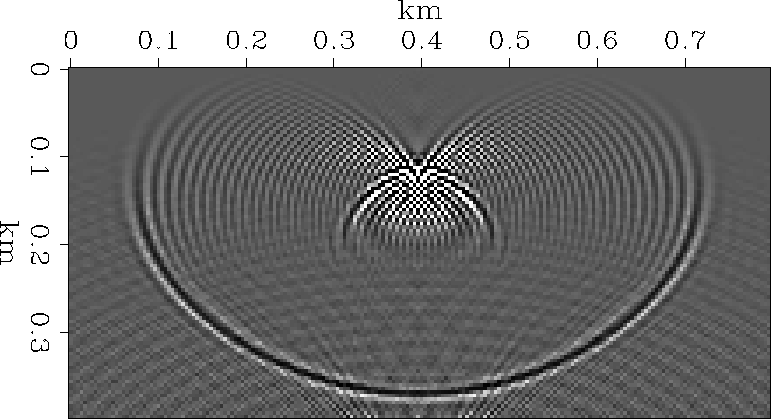Since positive-definite Hermitian matrices with Toeplitz structure represent convolutions with auto-correlation functions, Kolmogoroff provides a way to efficiently decompose them into the product of lower (causal) and upper (anti-causal) parts. Once this LU factorization has been achieved, the two parts can be inverted rapidly by recursion (polynomial division).
Unfortunately, the complex scale-factor, ![]() ,means
,means ![]() is symmetric, but not
Hermitian, so the standard Kolmogoroff factorization will fail.
Fortunately, however, the method can be extended to factor any
cross-spectrum into a pair of minimum phase wavelets and a
delay Claerbout (1998). The algorithm follows the standard
Kolmogoroff factorization; however, negative lags are kept separately
rather than being discarded.
is symmetric, but not
Hermitian, so the standard Kolmogoroff factorization will fail.
Fortunately, however, the method can be extended to factor any
cross-spectrum into a pair of minimum phase wavelets and a
delay Claerbout (1998). The algorithm follows the standard
Kolmogoroff factorization; however, negative lags are kept separately
rather than being discarded.
The Kolmogoroff factorization is not exact because the filters are factored in the frequency domain, assuming circular boundary conditions; while the polynomial division is performed in the time domain with transient boundary conditions. As a result the filters must be padded in the time-domain before spectral factorization. Padding does not significantly effect the overall cost of the migration, as the computational expense lies in the polynomial division, not in the factorization.
Alternative methods for cross-spectral factorization may avoid the circular boundary condition problem. For example, the Wilson-Burg algorithm Sava et al. (1998); Wilson (1969), based on Newton's recursive linearization, can efficiently factor polynomials, and is especially suited to the helical coordinate system.
|
3Dcardioid
Figure 1 Vertical slice through broad-band impulse response of 45 |  |